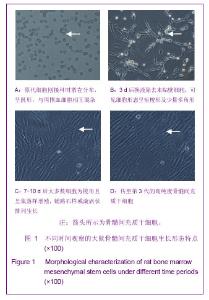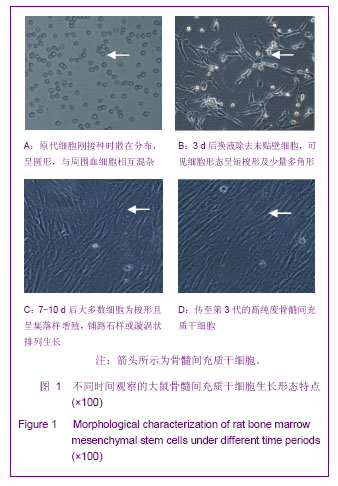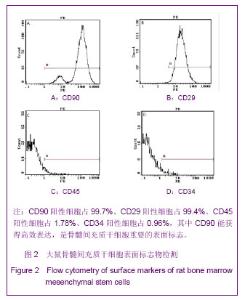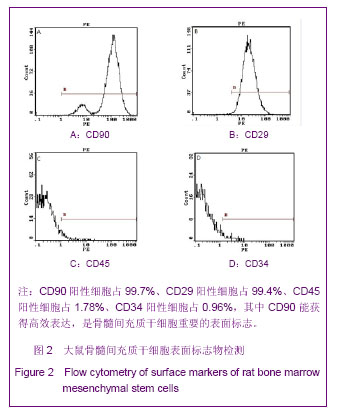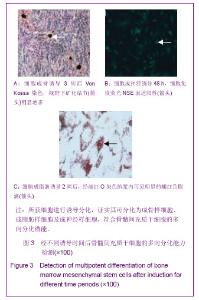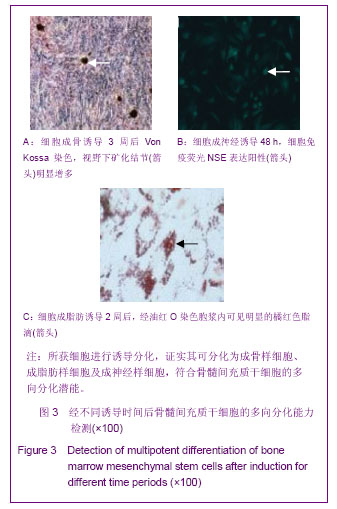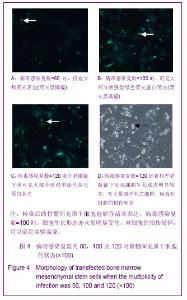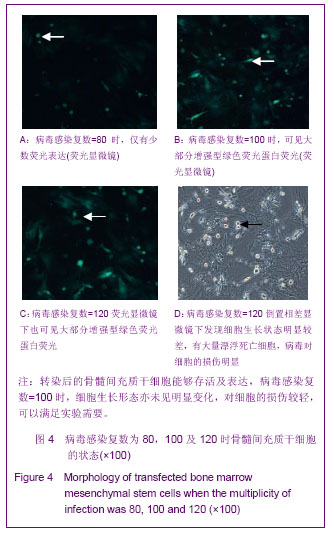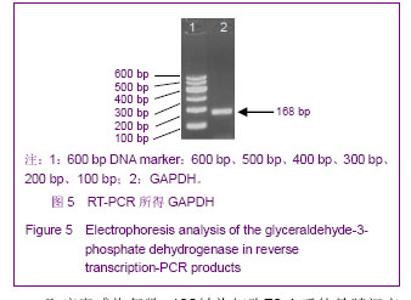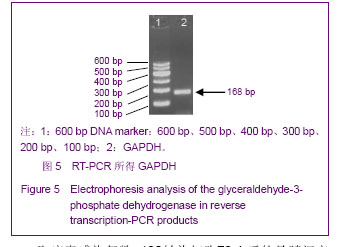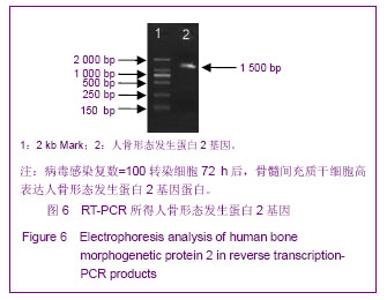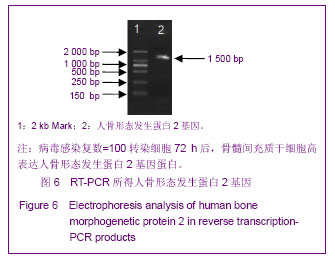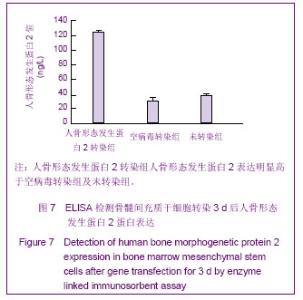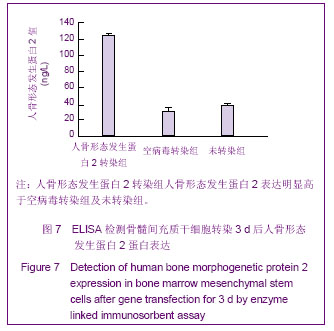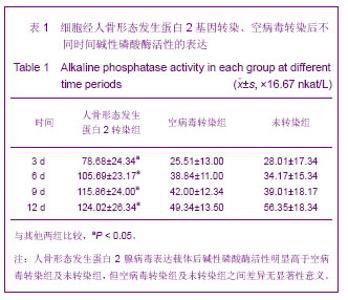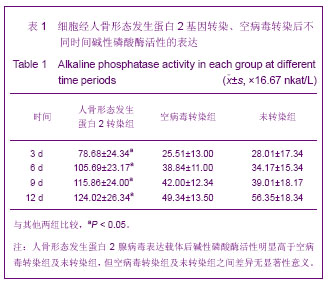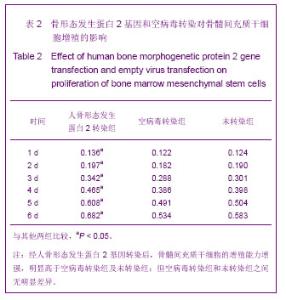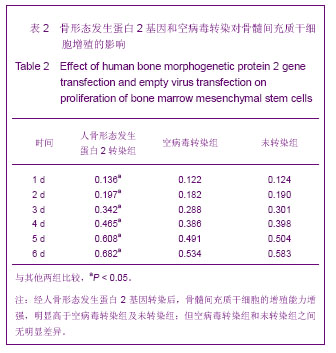| [1] Cheng SL,Lou J,Wright NM,et al.In vitro and in vivo induction of bone formation using a recombinant adenoviral vector carrying the human BMP-2 gene. Calcif Tissue Int.2001; 68(2):87-94.[2] Czernik M, Fidanza A, Sardi M, et al. Differentiation potential and GFP labeling of sheep bone marrow derived mesenchymal stem cells. J Cell Biochem. 2012 Aug 6. doi: 10.1002/jcb.24310.[3] Chang SC, Chung HY, Tai CL,et al. Repair of large cranial defects by hBMP-2 expressing bone marrow stromal cells: comparison between alginate and collagen type I systems. J Biomed Mater Res A. 2010;94(2):433-441. [4] Han D, Li J, Guan X. Ectopic osteogenesis of hBMP-2 gene-transduced human bone mesenchymal stem cells/BCB.Connect Tissue Res. 2010;51(4):274-281.[5] Kitano Y, Radu A, Shaaban A, et al. Selection, enrichment, and culture expansion of murine mesenchymal progenitor cells by retroviral transduction of cycling adherent bone marrow cells. Exp Hematol. 2000;28(12):1460-1469.[6] Riew KD, Lou J, Wright NM,et al.Thoracoscopic intradiscal spine fusion using a minimally invasive gene-therapy technique. J Bone Joint Surg Am.2003;85(5):866-871. [7] Gu HL, Liu L, Lv G, et al. Zhonghua Shiyan Waike Zazhi. 2007;24(3):368.顾海伦,刘莉,吕刚,等. Ad-人骨形态蛋白-2转染人变性椎间盘髓核细胞对细胞外基质代谢的影响[J].中华实验外科杂志,2007, 24(3):368.[8] Yao Y, Zhang F, Wang L, et al. Lipopolysaccharide preconditioning enhances the efficacy of mesenchymal stem cells transplantation in a rat model of acute myocardial infarction. J Biomed Sci. 2009;16:74.[9] Wang JC, Kanim LE,Yoo S, et al.Effect of regional gene therapy with bone morphogenetic rotein-2-producing bone marrow cells on spinal fusion in rats.J Bone Joint Surg Am. 2003;85(5):905-911. [10] Roth CM, Sundaram S. Engineering synthetic vectors for improved DNA delivery: insights from intracellular pathways. Annu Rev Biomed Eng. 2004;6:397-426.[11] Park BW, Kang EJ, Byun JH,et al. In vitro and in vivo osteogenesis of human mesenchymal stem cells derived from skin, bone marrow and dental follicle tissues. Differentiation. 2012;83(5):249-259. [12] Kisiel AH, McDuffee LA, Masaoud E, et al. Isolation, characterization, and in vitro proliferation of canine mesenchymal stem cells derived from bone marrow, adipose tissue, muscle, and periosteum. Am J Vet Res. 2012;73(8): 1305-1317.[13] Gonçalves Fda C, Paz AH, Lora PS, et al. Dynamic culture improves MSC adhesion on freeze- dried bone as a scaffold for bone engineering. World J Stem Cells. 2012;4(2):9-16.[14] Moscoso I, Rodriguez-Barbosa JI, Barallobre-Barreiro J,et al. Immortalization of bone marrow-derived porcine mesenchymal stem cells and their differentiation into cells expressing cardiac phenotypic markers. J Tissue Eng Regen Med. 2012;6(8):655-665.[15] Murray SJ, Santangelo KS, Bertone AL.Evaluation of early cellular influences of bone morphogenetic proteins 12 and 2 on equine superficial digital flexor tenocytes and bone marrow-derived mesenchymal stem cells in vitro. Am J Vet Res. 2010;71(1):103-114.[16] Han D, Li J, Guan X.Ectopic osteogenesis of hBMP-2 gene-transduced human bone mesenchymal stem cells/BCB.Connect Tissue Res. 2010;51(4):274-281. [17] Shingeno K,Nakamura T.Regenerative repair of the mandibler using a collagen sponge containsing TGF-β1.The international of artificial organs. 2002;25(11):1095-1102. [18] Yan MN, Dai KR, Tang TT,et al.Reconstruction of peri-implant bone defects using impacted bone allograft and BMP-2 gene-modified bone marrow stromal cells. J Biomed Mater Res A. 2010;93(1):304-313.[19] Real RP, Ooms E, Wolke JG,et al. In vivo bone response to porous calcium phosphate cement. J Biomed Mater Res A. 2003;65(1):30-36. [20] Ten Dijke P, Fu J, Schaap P, et al. Signal Transduction of Bone Morphogenetic Proteins in Osteoblast Diferentiation. J Bone Joint Surg Am. 2003;85(3):34-38. [21] Mamalis AA, Silvestros SS. Analysis of osteoblastic gene expression in the early human mesenchymal cell response to a chemically modified implant surface: an in vitro study. Clin Oral Implants Res. 2011;22(5):530-537. |
